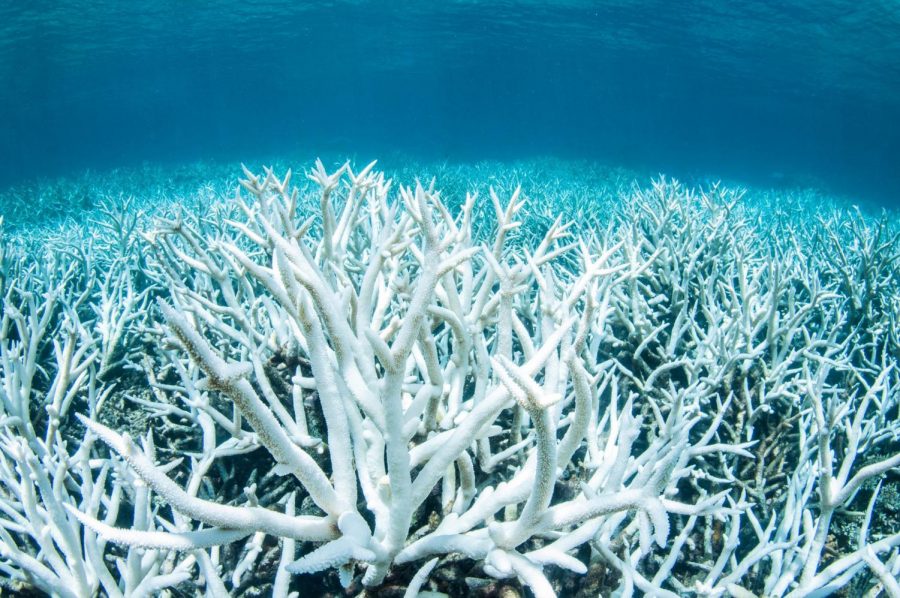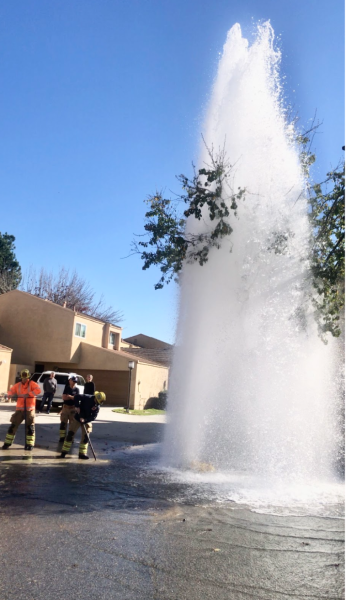A Loss of Color
Rising ocean temperatures has led to an increase in coral bleaching in the Great Barrier Reef.
October 24, 2020
Over the last 25 years, the Great Barrier Reef in Australia has lost half of its coral to coral bleaching. This is extremely shocking given the massive size of the reef. In fact, the loss of habit in the Great Barrier Reef is so extreme that according to Deron Burkepile, a professor at the University of California, Santa Barbara, the dead coral can be seen from space. The coral at the Great Barrier Reef covers approximately 133,000 square miles, meaning that only about 6,500 square miles of coral is left.
The loss of coral has also contributed to a loss of biodiversity in the Australian oceans. According to CNN Travel, the Great Barrier Reef is home to over 1,500 species of fish. As the coral populations decline, the species who live there are left without a home. This may result in the populations of these species declining as well because they no longer have the habitat they need to survive.
Coral bleaching is one of the many effects of global warming. Greenhouse gas emissions from burning fossil fuels are continuing to warm the atmosphere and oceans. The Australian Marine Conservation Society states that coral gets stressed from the rising ocean temperatures, causing them to expel the algae inside of them. However, this algae is what gives coral its color, so by getting rid of it, the coral turns a ghostly white. Although bleached coral can recover, the recovery can take decades and most bleached coral will end up dying.
According to the World Wildlife Fund, people can help combat coral bleaching by altering their daily actions. For example, people can limit the amount of fertilizer they use to prevent ocean runoff. However, the most effective way to reduce coral bleaching is to address its root cause: global warming. To keep atmospheric temperatures from rising, people must work together to reduce their environmental footprint. If enough action is taken to help the environment, people can not only save coral reefs but also forests and other natural habitats.
Given today’s environmental situation, people need to start paying more attention to their impact on the environment. If we continue to ignore such an imperative issue, we could end up leaving our planet in worse conditions for future generations. Abigail Lee (9) agrees and says that “humans are the ones that will determine the future of the Earth.” Simple actions such as conserving electricity and water, recycling, and using renewable resources can help lead to a better future for our environment. Even if something like the loss of coral in the Great Barrier Reef is so far away from us in California, we should remember that it is our actions that are causing this result.






















Anita Tun • Nov 6, 2020 at 12:38 PM
Thank you for talking about the seriousness of what global warming is doing to our environment!
Paige Reddick • Nov 5, 2020 at 7:37 AM
This article resonates with me heavily. I am passionate about advocating for the protection of our environment and this article explained a massive issue our oceans are facing. I hope this article educates and inspires others to advocate for our environment’s health!
danielle huizar • Nov 3, 2020 at 8:15 AM
I loved this article. This article was very informative since you explained what coral reefs and coral bleaching were, what is causing corals to lose colors, and what society can do to help. It is so heartbreaking that corals are losing their color.
Eunice Ahn • Oct 25, 2020 at 4:34 PM
I love this article so much. From the moment you pitched it, I really wanted to read it. I wouldn’t say I am such a huge advocate against global warming, but I sincerely believe it is a problem that must be addressed. I like how you just went straight to the point, and I also love the article title. What kind of world will we live in if all the corals were to die is what I wonder all the time.